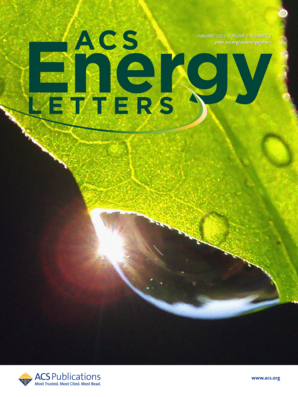全面剖析 Roquin 与 RNA 干环的结合偏好
IF 19.3
1区 材料科学
Q1 CHEMISTRY, PHYSICAL
引用次数: 0
摘要
mRNA 的细胞水平在转录后受位于 3'- 非翻译区的顺式调节元件控制。RNA 结合蛋白(RBPs)可识别这些线性或结构性元素,从而调节 mRNA 的稳定性。Roquin-1和-2蛋白利用其独特的ROQ结构域特异性地识别RNA茎环图案、含三核苷酸环的组成性衰变元件(CDE)和含六核苷酸环的替代性衰变元件(ADE),从而启动mRNA降解。然而,Roquin 与不同类别茎环的 RNA 结合能力尚未得到严格鉴定,因此其确切的结合偏好尚不清楚。在这里,我们利用 sRBNS(structured RNA Bind-n-Seq)在核苷酸分辨率上绘制了 ROQ 结构域的 RNA 结合偏好图,sRBNS 是一种使用预结构化 RNA 文库的定制 RBNS 工作流程。我们发现 Roquin 对特定环大小有明显的偏好,并扩展了 CDE 和 ADE 的共识基团。通过典型的 RNA-ROQ 界面,新识别出的主题具有纳摩尔级的亲和力。以这些新的茎环变体为蓝图,我们预测了新的 Roquin 目标 mRNA,并在细胞中验证了扩展的目标空间。这项研究展示了高通量检测(包括 RNA 结构形成)在系统研究(结构)RNA 结合偏好以全面鉴定 mRNA 靶标和阐明 RBPs 生物功能方面的强大功能。本文章由计算机程序翻译,如有差异,请以英文原文为准。
Comprehensive Profiling of Roquin Binding Preferences for RNA Stem-Loops
The cellular levels of mRNAs are controlled post-transcriptionally by cis-regulatory elements located in the 3'-untranslated region. These linear or structured elements are recognized by RNA-binding proteins (RBPs) to modulate mRNA stability. The Roquin-1 and -2 proteins specifically recognize RNA stem-loop motifs, the trinucleotide loop-containing constitutive decay elements (CDEs) and the hexanucleotide loop-containing alternative decay elements (ADEs), with their unique ROQ domain to initiate mRNA degradation. However, the RNA-binding capacity of Roquin towards different classes of stem-loops has not been rigorously characterized, leaving its exact binding preferences unclear. Here, we map the RNA-binding preference of the ROQ domain at nucleotide resolution introducing sRBNS (structured RNA Bind-n-Seq), a customized RBNS workflow with pre-structured RNA libraries. We found a clear preference of Roquin towards specific loop sizes and extended the consensus motifs for CDEs and ADEs. The newly identified motifs are recognized with nanomolar affinity through the canonical RNA-ROQ interface. Using these new stem-loop variants as blueprints, we predicted novel Roquin target mRNAs and verified the expanded target space in cells. The study demonstrates the power of high-throughput assays including RNA structure formation for the systematic investigation of (structural) RNA-binding preferences to comprehensively identify mRNA targets and elucidate the biological function of RBPs.
求助全文
通过发布文献求助,成功后即可免费获取论文全文。
去求助
来源期刊

ACS Energy Letters
Energy-Renewable Energy, Sustainability and the Environment
CiteScore
31.20
自引率
5.00%
发文量
469
审稿时长
1 months
期刊介绍:
ACS Energy Letters is a monthly journal that publishes papers reporting new scientific advances in energy research. The journal focuses on topics that are of interest to scientists working in the fundamental and applied sciences. Rapid publication is a central criterion for acceptance, and the journal is known for its quick publication times, with an average of 4-6 weeks from submission to web publication in As Soon As Publishable format.
ACS Energy Letters is ranked as the number one journal in the Web of Science Electrochemistry category. It also ranks within the top 10 journals for Physical Chemistry, Energy & Fuels, and Nanoscience & Nanotechnology.
The journal offers several types of articles, including Letters, Energy Express, Perspectives, Reviews, Editorials, Viewpoints and Energy Focus. Additionally, authors have the option to submit videos that summarize or support the information presented in a Perspective or Review article, which can be highlighted on the journal's website. ACS Energy Letters is abstracted and indexed in Chemical Abstracts Service/SciFinder, EBSCO-summon, PubMed, Web of Science, Scopus and Portico.
 求助内容:
求助内容: 应助结果提醒方式:
应助结果提醒方式:


